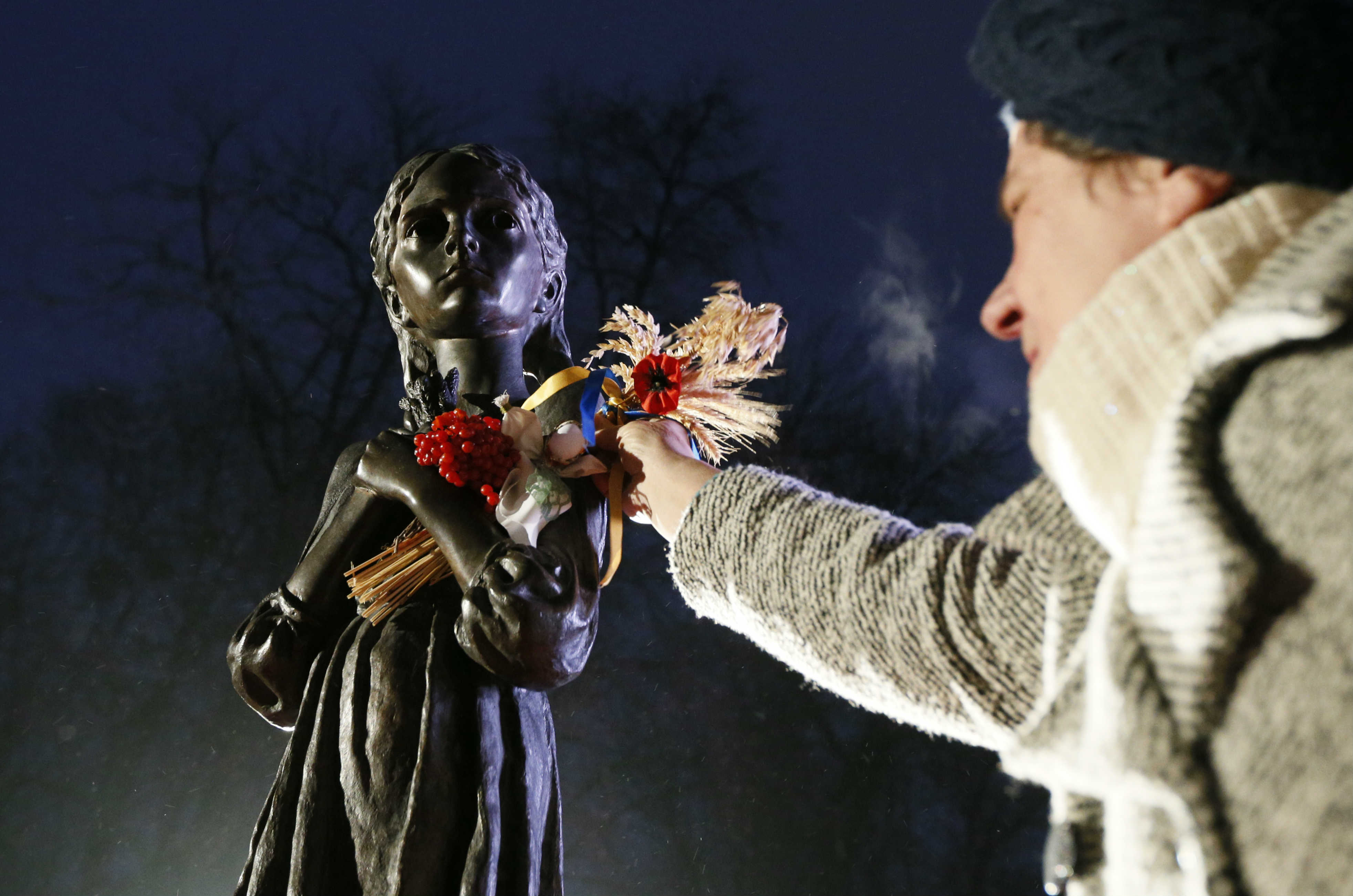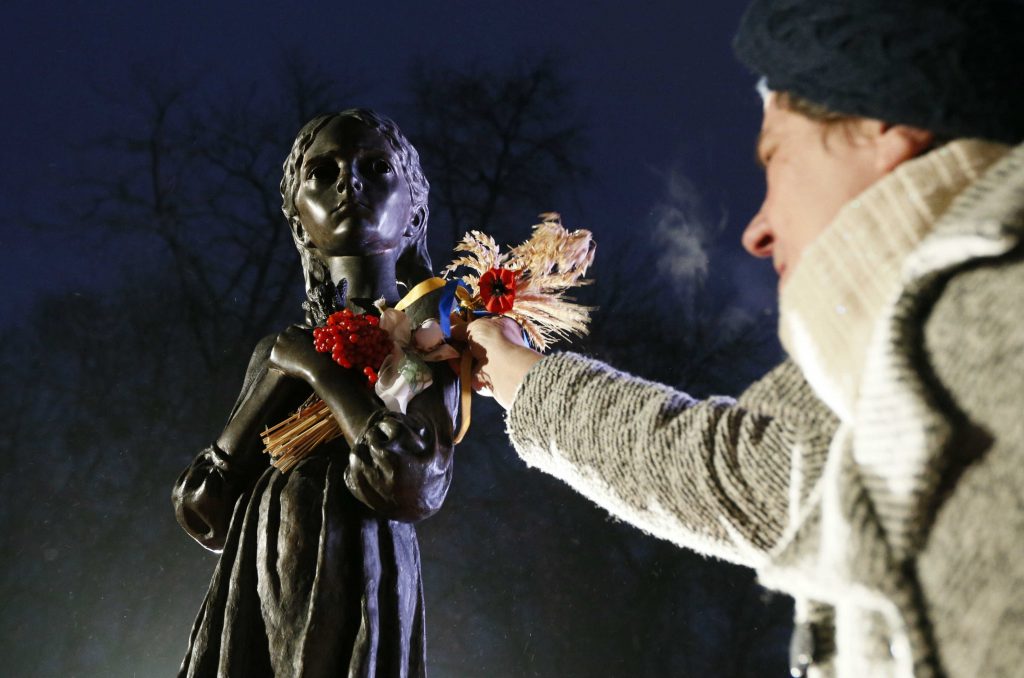 It’s Black Friday in Kyiv, Ukraine, and retail is booming. Abundance is everywhere. Like everywhere else, Black Friday sales are plastered on store windows around town.
It’s Black Friday in Kyiv, Ukraine, and retail is booming. Abundance is everywhere. Like everywhere else, Black Friday sales are plastered on store windows around town.
For Ukrainians, this reality comes in shocking contrast with the events of 1933 eighty-five years ago. Ukraine was breadless and in crisis. Corpses littered the streets in central and southern Ukraine, then part of the USSR.
William Henry Chamberlain, the American journalist and Moscow correspondent of The Christian Science Monitor traveled to Ukraine in October 1933. He only reported what he saw in 1934, after he had permanently left the Soviet Union. He famously said: “There was no other catastrophe of such scale in human history that would have drawn so little attention of the world.” Chamberlin’s book Russia’s Iron Age was one of the few, if not the only, comprehensive contemporary views on the effect of Russia’s five-year economic plan, and the famine which devastated parts of the Soviet Union, particularly Ukraine, during 1932-1933.
This year—as is the tradition on the third Saturday of November—Ukraine is commemorating the 85th anniversary of the Holodomor, a man-made, politically induced famine which took the lives of over four million Ukrainians. This famine was an instrument of the national policy of the Bolsheviks and their last effort to conquer the resistance of the Ukrainian peasantry against the Soviet system.
Fast forward to today. Many are shocked by the tactlessness of shops which nevertheless advertise their sales with a “Black Friday” message. Just one day before every Ukrainian is asked by the National Memory Institute to light a candle in memory of the innocent victims of the Holodomor, the Black Friday craze begins. It’s beyond tone deaf.
Ukraine’s history is difficult to digest without painkillers. There is too much inconvenient truth in it. Inconvenient for modern Ukrainians, inconvenient for all post-Soviet people.
In 1932, Stalin announced decrees for the “protection of social property.” Ukrainians villagers were executed by firing squads for “stealing” a sack of wheat and or even a husk of corn that had been days earlier expropriated by the state. Further decrees provided for a complete blockade of villages for allegedly sabotaging the state’s grain procurement campaign—de facto sentencing Ukrainians inhabitants to execution by starvation. Further policies encouraged Russian peasants to settle into the empty or half-empty villages of “the free lands of Ukraine.”
For modern Ukrainians whose families emigrated from Russia, who came to build their lives on the foundation of the bones of Ukrainians who were starved in 1932-1933, will they respect the nation where they were transferred?
For those Ukrainians whose loved ones died the most horrible of deaths, will they have enough forgiveness not to blame those who were transferred to Ukraine often against their own will, their own fates tossed by the inhuman Soviet Communist machine?
They must.
For Ukraine, memory is a form of resilience. Without it, there is no Ukraine. Only through reflection and in facing the truth can we develop a common understanding of history. With that common understanding, sooner or later a common grief, a common tact, and common understanding will emerge.
This year’s Black Friday sales demonstrate how much education lies ahead.
What then is the best way for Ukraine to commemorate the Holodomor? By honoring the victims and continuously raising awareness of the Soviet Union’s inhuman policies. By honoring those journalists and researchers, like William Henry Chamberlin, Gareth Jones, Robert Conquest, James Mace, and now Anne Applebaum, who studied and spoke out. Besides the candles and promises of “never again,” there will be conferences in Ukraine, awareness campaigns around the world, appeals to foreign parliaments and dignitaries to recognize the Holodomor as a genocide against the Ukrainian nation. But the biggest commemoration is yet to take place in the minds of Ukrainians themselves. It will happen when Ukrainians move beyond grieving and reminding themselves and others of their victimhood. It will happen when Ukraine becomes a bigger contributor to feeding the hungry around the world. The best way to commemorate the millions of Ukrainians who died during the Holodomor is to alleviate the pain of people who suffer from food shortages today.
Despite Russia’s invasion and the ongoing war, Ukraine is one of the largest agricultural producers in the world. Grain production is five times higher than local demand. Every year Ukraine exports ten to seventeen million tons of grain. Of course, there are many unmet local needs and Ukrainians need to be responsible with their own resources. But when internal demand is fulfilled, and Ukraine exports significant quantities, it can afford to help those in need.
It is symbolic that in the days prior to Holodomor Commemoration Day, which the country marks on November 24, Ukraine announced it is providing humanitarian assistance to those who suffer from hunger in Congo, Sudan, and Yemen. There is no better way to gather one’s own strength and resilience than by helping others.
Nataliya Popovych, international communications expert and civil activist, is the co-founder of Ukraine Crisis Media Center and founder of the One Philosophy Group of Companies.
Image: A woman visits a monument to Holodomor victims during a commemoration ceremony marking the 84th anniversary of the famine of 1932-33, in which millions died of hunger, in Kyiv, Ukraine November 25, 2017. REUTERS/Valentyn Ogirenko
